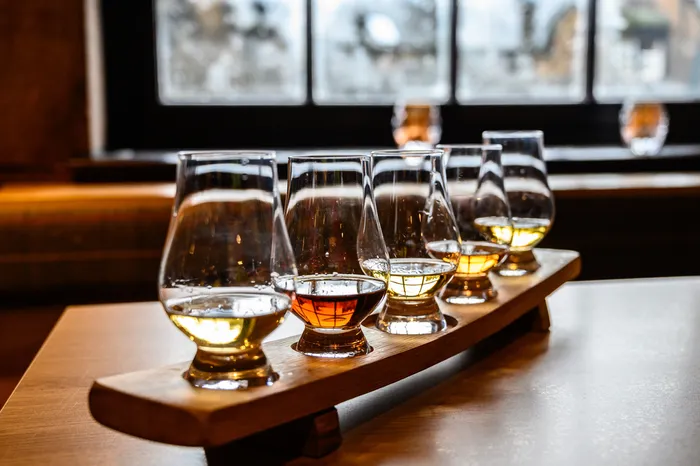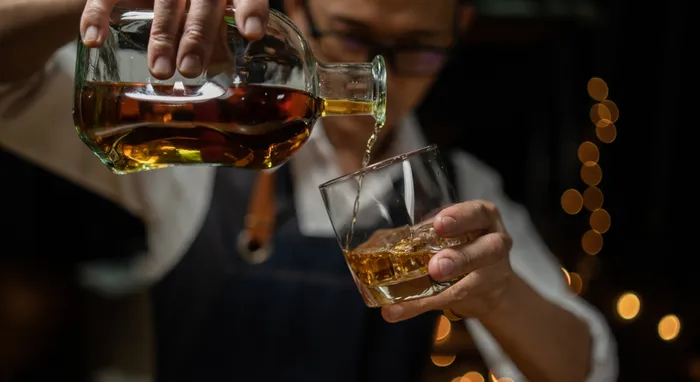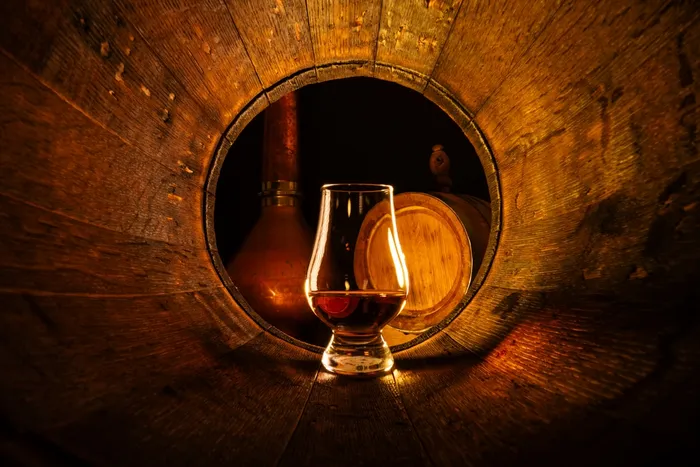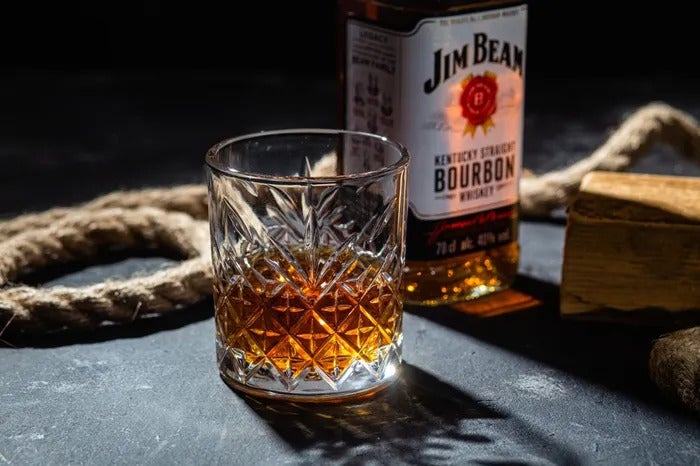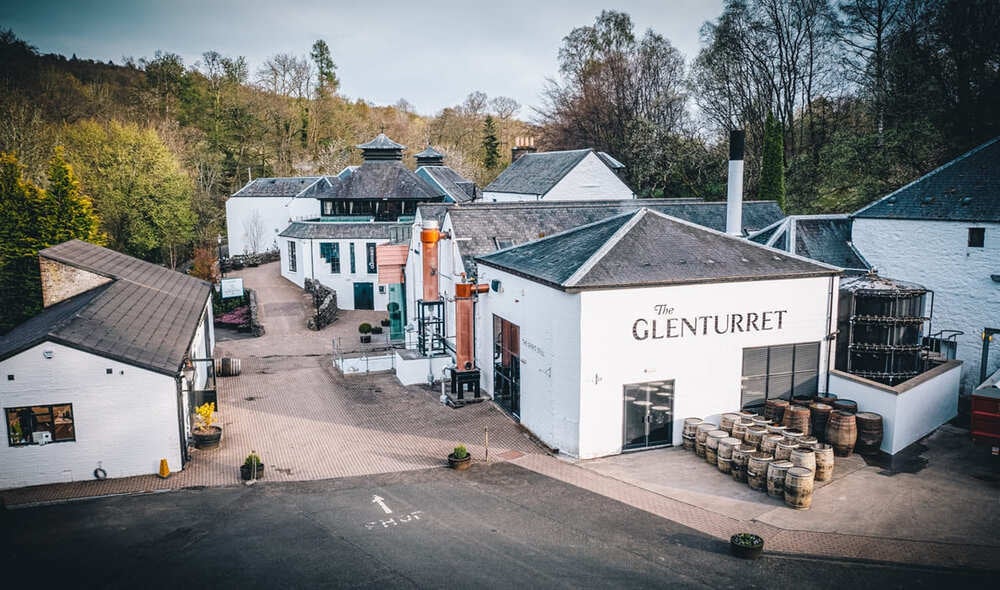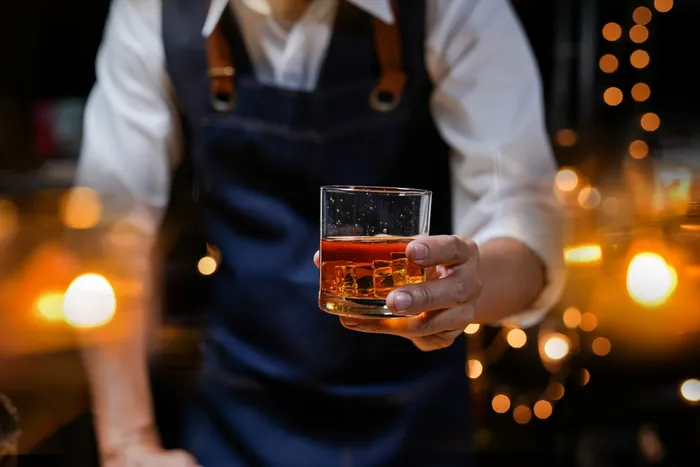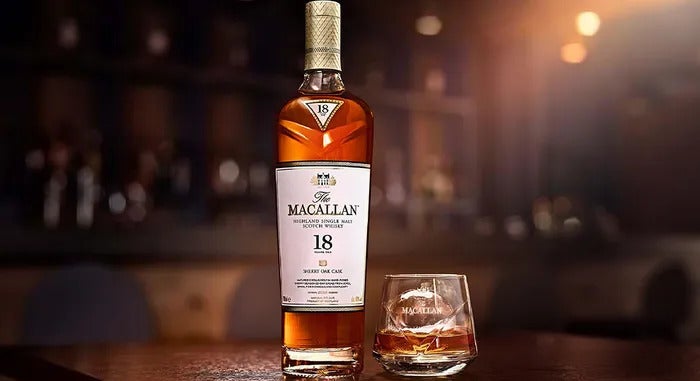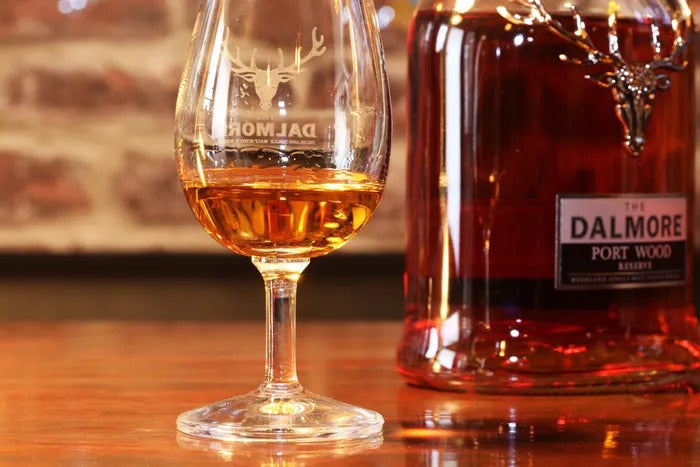There are no results that match your search.
Whiskey • 7 min • 19.05.2023
From Grains to Glass: Understanding How Whiskey Is Made
Whiskey is a beloved alcoholic beverage enjoyed globally for its complex flavours and aromas that come from the many steps involved in its creation, from the grains used to make the mash, to the fermentation and distillation processes, and the role of oak barrels in creating its distinctive taste and scent.
Stages of Distillation
- Malting
- Mashing
- Cooling
- Fermenting
- Distilling
- Aging
- Bottling
1. Malting
Grains such as barley, wheat, rye, or corn are soaked and allowed to germinate, converting starches into sugars. It is then dried in a kiln to incorporate subtle nuanced flavours like peat and to stop the germination process.
2. Mashing
The malted barley is then ground into a coarse flour called grist which is then combined with hot water in a large vessel called a mash tun. This mixture creates a mash, which extracts sugars and enzymes from the barley. Other grains like corn or rye may also be added, depending on the desired whiskey recipe, forming the mash bill.
3. Cooling
The sugary liquid extracted from the mash, known as wort, is transferred to a different vessel called a washback. The wort needs to be cooled down to a suitable temperature before fermentation can occur, usually achieved using a heat exchanger or cooling system.
4. Fermenting
Yeast is added to the cooled wort and consumes the sugars, converting them into alcohol. This produces a liquid known as wash, which is essentially a low-alcohol beer.
5. Distilling
The wash is transferred to a still for distillation. The distillation process typically involves two rounds of distillation in different types of stills: the wash still and the spirit still.
In the wash still, the wash is heated, and the alcohol vapor rises to the top, leaving behind impurities. This vapor is then condensed and collected. The resulting liquid, known as low wines, is transferred to the spirit still for a second distillation that helps refine the flavours and increase the alcohol content.
6. Aging
After distillation, the whiskey is placed in wooden casks for maturation. The type of cask, such as oak barrels, heavily influences the whiskey's flavour profile as it ages. During the aging process, the whisky interacts with the wood, gaining flavours, aromas, and colors. The minimum aging period for whiskey varies depending on the country and regulations.
7. Bottling
Once the whiskey has reached its desired age and quality is confirmed by the master distiller, it is ready for bottling. The whiskey is typically filtered to remove any remaining impurities and then diluted to the desired alcohol strength with water. It may also be subjected to additional filtration or fining processes before being filled into bottles.
The production of whiskey involves various stages of distillation that differ based on the type of whisk(e)y being produced, the most common ones are the following:
- Malt whiskeys typically undergo double distillation in copper pot stills using the wash and spirit stills to create a high-proof spirit.
- Grain whiskeys are made from a blend of grains and distilled in continuous column stills with multiple distillation stages needed for a high-proof spirit.
- Blended whiskeys involve mixing different whiskies after distillation to produce a unique flavour profile. Other laws apply to different locations where the whisky is made.
Different Types of Whiskeys
Single-Malt Whisky
Single-malt whisky is one of the oldest types of whisky made from malted barley, yeast, and water, all produced and processed in the same distillery. Under Scottish law, to be considered single-malt whisky, it must be aged for at least three years in oak barrels in Scotland and bottled at least 40% ABV.
As far as aging is concerned, if the bottle indicated 12 years, then every liquid spirit inside the bottle is at least 12 years. Single malt whisky is highly regarded among whisky connoisseurs for its unique taste and aroma, which is influenced by many factors, including the use of different casks, production methods, and the region where the whiskey was produced.
Bourbon Whiskey
Bourbon whiskey also falls into the American whiskey category and is darker, bolder, and slightly sweeter on the notes compared to other whiskeys. Although Kentucky is considered the center of Bourbon production, it can be produced in any state in the United States. Bourbon whiskey is typically made from mixed grains, which contain at least 51% corn, then fermented with yeast to distill beer. The beer is then distilled and aged in newly charred oak barrels to achieve its unique taste and color and then bottled in at least 80 Proof or 40% ABV.
Canadian Whisky
Canadian whisky has a unique production process that distinguishes it from other styles. They are usually blended before aging in oak barrels to give them a mellow and smooth flavour profile. Made from a blend of grains predominantly rye, then corn, and barley, Canadian whiskies are generally lighter and more beginner friendly than Scotch whiskies, with less smoky or peat notes. Canadian whisky must be aged for at least three years in oak barrels and bottled at a minimum ABV of 40%.
Rye Whiskey
Rye whiskey, a popular type of whiskey in North America, is typically made primarily or at least 51% from rye grain, which gives it a bold and dry flavour with a distinct peppery taste. To be labeled as "straight rye whisky" in the US, it must be aged for a minimum of two years in new, charred oak barrels and distilled at no more than 80% ABV. Canadian rye whisky, on the other hand, has no specific aging restrictions.
Does All Whiskey Taste the Same?
For the not-so-average consumer or the shots drinker, one might think that all whiskey tastes the same as they all get the same burn in their throats, but the enthusiasts and the people who care would say otherwise. The beauty of whisk(e)y lies in every people who drink and enjoy it. Some might go for Scotch or single malts as they have a varying complexity of flavours from different regions of Scotland while others like the distinct sweetness of Bourbons.
In the end, whiskeys are liquid gold to those who find value in every drop. Like someone who goes to the gym to look good and feel better, our palate needs to be trained to appreciate the finer things so take it slow and enjoy, add a bit of water to your whisk(e)y, and let it play in your mouth where taste matters.







